Arguably, components that sustain the most wear in a vehicle are your tires, they are the main contact point of the car and constantly run the risk of bumping against some kind of debris or curb on the road.
Usually, with a good suspension, the impact faced by the tires goes unnoticed by the driver. But over time, these slight bumps and knocks add up and lead to imbalances in the wheel.
Wheel balancing helps to attain proper distribution of the weight by counteracting the forces pulling in the direction opposite to that of the axis of the tire’s rotation. Proper wheel balancing not only saves you the general discomfort of an imbalanced machine that isn’t able to run smoothly but also aids in improving your safety and increasing your fuel economy.
Though now you might be wondering what type of wheel balancing is right for you- static or dynamic and how do they differ?
Table of Contents
Let’s start off by talking about the key differences between static and dynamic wheel balancing. While assessing the weight distribution method, mainly two considerations are taken into account- the width of the tire and the complexity of imbalances. Tires that are generally bigger in size are not suitable for static balancing as a wider area can bring more complexity. Speaking of complex, difficulty in fixing the imbalances is another major difference that separates static balancing from dynamic balancing.
Static wheel balance is a method in which the wheel’s center of mass is balanced around its axis of rotation. This simply means that wheels are rotated on its axis to remove anomalies in load and counter the extra forces in the opposite direction so that its mass is evenly distributed along its axis.
The weight distribution irregularities found in certain spots are measured by the mechanic sensing vibrations and are corrected such that when mounted on a rotating axis the tire remains constant, not falling heavy on either of the sides. It is a commonly used technique for slight imbalances and variations in tires of small vehicles and is performed as standard for motorcycles as they have a narrower tread.
It is a commonly used technique for slight imbalances and variations in tires of small vehicles and is performed as standard for motorcycles as they have a narrower tread.
In the static balancing method, the tire is mounted on the balancing machine and is rotated between two bearings. Upon completing the rotation, the heavier part of the wheel settles at the bottom which is then corrected using counteracting weights. This process is repeated until the wheel no longer pendulates to a stop or doesn’t have the tendency to move under the influence of gravity.
In some cases where wheel imbalances are not assessed accurately, the static balancing method is not able to produce the desired results and tires have to be rebalanced.
Unlike the static method, Dynamic wheel balancing does not rely on human assessment of the weight irregularities and involves a framework of computers and sensors to ensure precision in balancing the tires.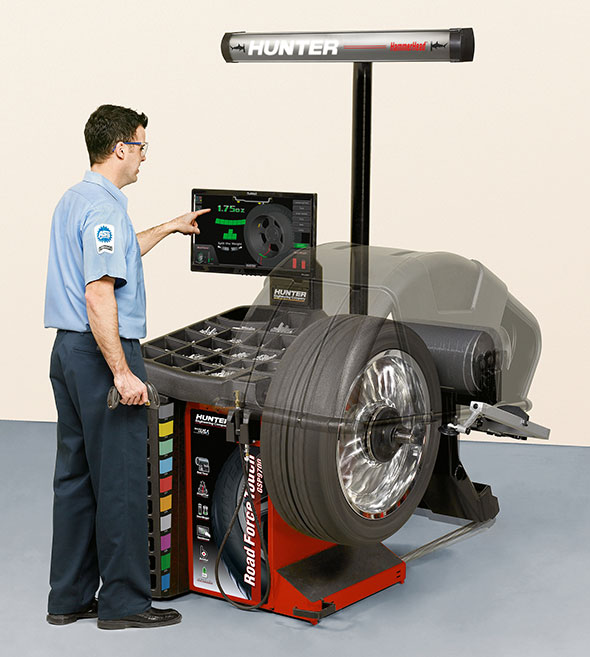
Dynamic balance works by the alignment of the rotating axis of the wheel with respect to its principal axis. In a dynamic wheel balance, the tires are assembled and placed on the balancing machine to rotate at 10-15 MPH with high sensitivity scanners.
These Sensors relay the information about every single weight irregularity that is found to the computer and allow for an accurate analysis by the system which also determines the counteracting weight that needs to go in each spot. Weights are then added by the mechanic accordingly within the tire’s rim or outside. This method is usually used for tires that are severely misaligned and or are very wide and big.
The extras you fit into your wheel may or may not affect the balance of the tire depending on the weight of the addon or whether it compromises the overall balance in any way. It can take as little as 5 grams of extra weight for your wheels to break out of its linear path if the addon in any way affects the valve cap of the tires.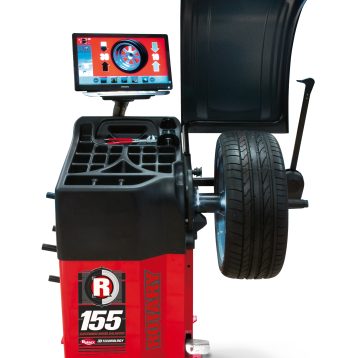 However, you might not face any issue if the installed cap is accurately balanced with the wheel or adds trivially less weight to the wheel such that of plastic.
However, you might not face any issue if the installed cap is accurately balanced with the wheel or adds trivially less weight to the wheel such that of plastic.
Balancing that is done properly done ideally provides a better rotation of the wheel and a smoother driving experience. Which out of Static and dynamic wheel balancing you need will vary based on the condition of your tires but needless to say, they both support the reliable function of your wheels base and help in the longevity of tires. Going for a wheel balance every 5000 miles or whenever you buy new tires is highly recommended.
The goal of tire balance is to distribute weight equally around the entire circumference of the tire. Wheels that are out-of-balance can cause uncomfortable vibrations while driving. It also results in premature wear of suspension and steering components, rotating parts, and tires.
Wheels that are out-of-balance can cause uncomfortable vibrations while driving. It also results in premature wear of suspension and steering components, rotating parts, and tires.
When refitting any tire to a wheel, Continental recommends that the tire is correctly rebalanced to help eliminate vibration and avoid premature wear caused by an imbalance in the rotating wheel and tire assembly.
As part of routine vehicle maintenance, drivers should seek to balance the tires on their vehicle after every 5,000-10,000km traveled, or after 1-2 years (whichever comes first).
Also, it's worth balancing the tires and wheels when:
Another thing to remember; tire balance is entirely different to wheel alignment, though the two concepts are sometimes confused. Aligning a set of wheels entails adjusting their angles so that they're parallel to each other and perpendicular to the ground.
Tire imbalance can develop over time as the tire tread wears down through regular use and the distribution of weight changes. But subjecting the tires to excessive stress by driving on poor roads, hard braking and cornering may hasten matters further.
When one or more tires are out-of-balance on your vehicle, there are several common indicators:
If you notice one or more of these symptoms – even if the tires are relatively new – then it's possible your car has an imbalanced tire.
There are two methods for tire balancing performed at your local garage; static balance and dynamic balance.
1. Static balancing
If there is only a slight imbalance to the tire, static balancing is the appropriate technique and is relatively easy to do; the wheel and tire assembly is placed onto a vertical supporting device with a spindle or equivalent to measure balancing on one axis.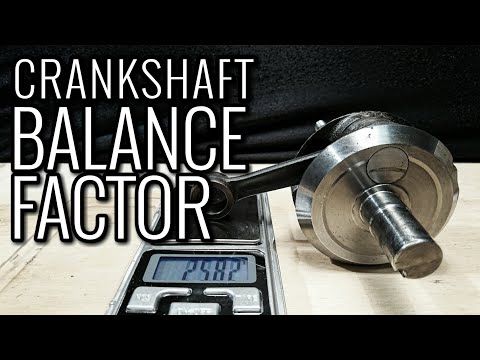 The heavier side will lean lower to the ground than the lighter side; once identified, the mechanic will place a small weight measuring fractions of an ounce 180 degrees across the plane of the tire, onto the flange of the wheel rim, until the balance is restored.
The heavier side will lean lower to the ground than the lighter side; once identified, the mechanic will place a small weight measuring fractions of an ounce 180 degrees across the plane of the tire, onto the flange of the wheel rim, until the balance is restored.
2. Dynamic balancing
For more complex cases of tire imbalance, dynamic balancing is a technique using spinning computer balancers to measure the tire on all three axes. The mechanic places a fully assembled wheel and tire on a machine and rotates it at speed ranging from 16-25 km/h (10-15 mph) to 88-96 km/h (55-60 mph). As it spins, the sensors of the machine capture every single weight imperfection.
With the analysis complete, the computer then specifies how much weight and where the mechanic should apply to balance the tire. The small weights – either clip-on or adhesive weights – are added to both the inner and outer sides of the wheel rim, to provide the highest precision and balance.
Dealer Locator
Wheel balancing is necessary so that the driver does not experience discomfort during the movement of the car, from such a phenomenon as wheel beating. This happens when there is an imbalance relative to the axis or plane of rotation.
This happens when there is an imbalance relative to the axis or plane of rotation.
Contents
In the process of manufacturing wheels, tubes and tires, it is impossible to make a perfectly balanced product. The main part of the imbalance is brought by the tire. Because it is farthest from the center of rotation. Hence the need for balancing. After all, improper wheel balancing not only makes driving uncomfortable, it also contributes to the rapid wear of suspension elements. First of all, the wheel bearing suffers, which will certainly have to be changed if you drove on unbalanced wheels.
Agree, it is much cheaper to do balancing than to change worn parts and tires.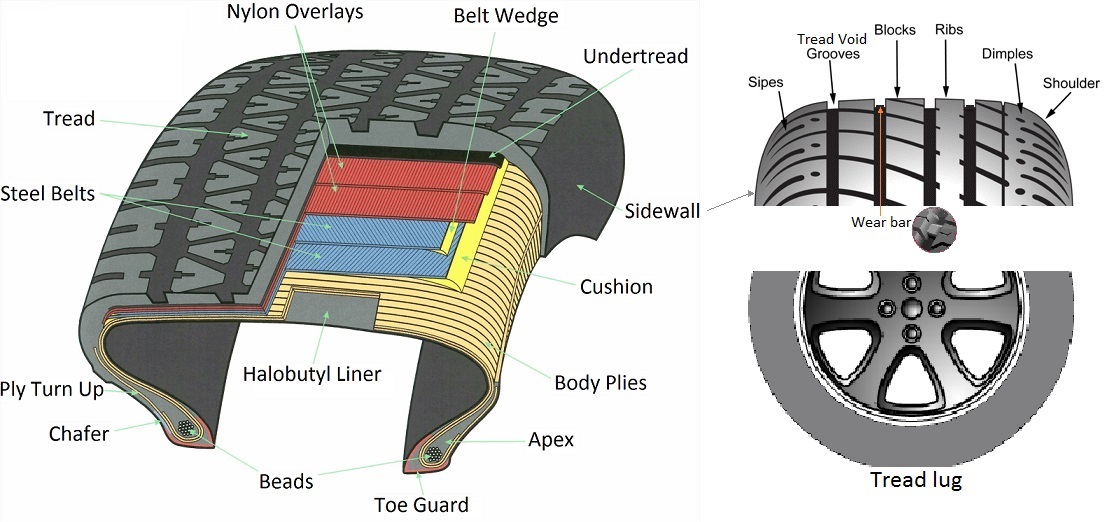 Until now, there are people who balance only the front wheels. Allegedly, only the leaders need this, and there is no need to spend extra money on balancing the rear ones. This is a delusion, and such savings will only kill the elements of the rear suspension.
Until now, there are people who balance only the front wheels. Allegedly, only the leaders need this, and there is no need to spend extra money on balancing the rear ones. This is a delusion, and such savings will only kill the elements of the rear suspension.
There are several types of balancing:
There is also a division into dynamic and static.
In the case when the wheel has a static imbalance, its weight along the axis of rotation is uneven, it has a heavy place. This place will hit the road with more force, and the greater the speed of its rotation, the stronger the static imbalance will be.
To avoid this phenomenon, static balancing is done. This service in our country is provided by all tire shops. The wheel is placed on a special machine, in the process of rotation, the automation determines the degree of imbalance, and indicates where it is necessary to install an additional load.
There are two types of weights:
It should be noted right away that not every tire service can offer this service. Since the equipment used in most cases is old, we can say trophy.
So what is dynamic balancing for? The wider the profile of the wheel, the more likely it is to get a dynamic imbalance during movement, relative to the plane of its rotation.
This type of balancing is carried out after the main static, and if possible dynamic. Under the suspended car, special equipment is installed, a balancing stand, the wheel spins up to a speed of 90 km/h, and the automation takes measurements and indicates in what place and what load should be installed. For this balancing, you need equipment that is often available only to professional tire fitting centers.
Automatic only for trucks and buses. This happens as follows - special balancing granules, small beads, less often sand are poured into the wheel, because the latter has a high abrasive effect. During driving, under the influence of centrifugal force, the balancing material is attracted to the inner surface of the tire, which leads to self-balancing.
This type of balancing is not used in passenger vehicles due to the fact that it is not possible to determine exactly how much material needs to be poured into each wheel. Additionally, its weight also increases.
There are a number of rules, the implementation of which guarantees the highest quality balancing.
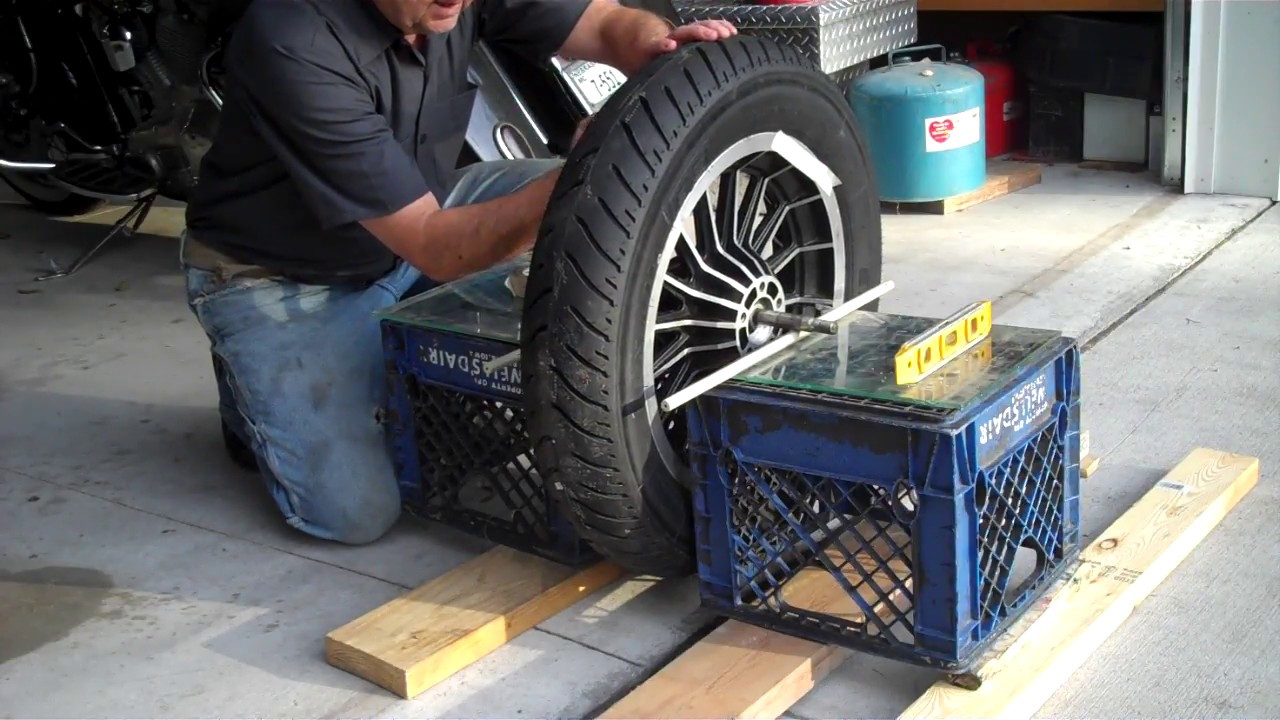 It is not always possible to notice this from the outside, but it can affect the balancing quite strongly;
It is not always possible to notice this from the outside, but it can affect the balancing quite strongly;
Recommended frequency varies. Someone says that it is necessary every 10 thousand kilometers, someone insists on 20 thousand. If you feel that the steering wheel beats while driving, there is excessive vibration of the body, do not be too lazy to visit a tire shop. By doing so, you may save on more expensive repairs.
We hope that after reading this article, you will no longer have questions about why wheel balancing is needed, and whether it is necessary to do it.
It is unlikely that anyone will argue with the fact that there is such a necessary procedure as wheel balancing.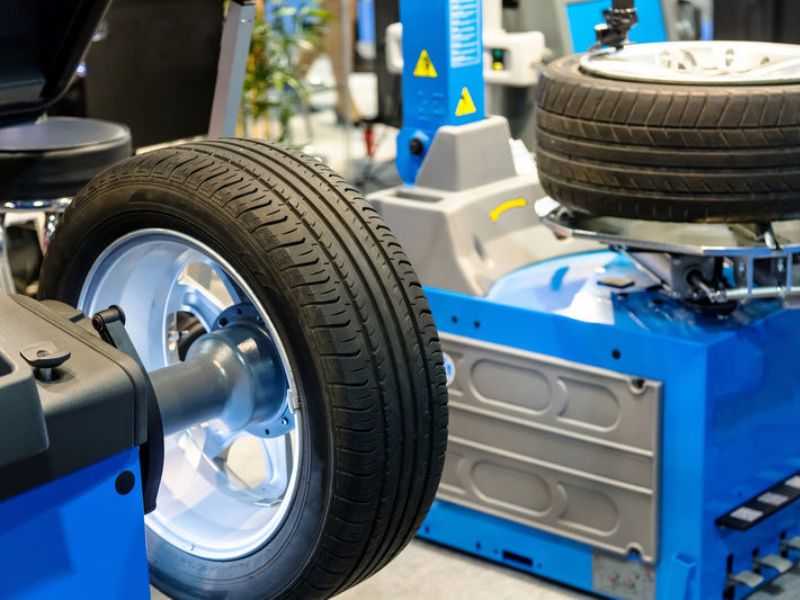
Almost certainly every motorist has experienced unpleasant twitches on the steering wheel in time with the rotation of the car's wheels when they were not balanced.
At the same time, not every mechanic knows all the nuances of balancing, not to mention ordinary motorists. What are the main points to know about this procedure?
Balancing is required for all wheels used on the vehicle. It provides predictable behavior of the machine when driving, the proper level of comfort, as well as uniform tire wear.
If this procedure is not done, then the load on the suspension and steering will seriously increase - unpleasant vibrations (which increase with increasing speed) and steering wheel beats may appear in the direction of travel, and the tread will wear unevenly, due to which the tire will come out of building much faster.
Thus, the main task of balancing is to evenly distribute the mass of the wheel.
Contrary to popular belief that only the front drive and steering wheels need balancing, it must be said that the rear wheels need balancing just as much as the front ones. After all, if the driver does not feel vibrations and beats from the rear wheels, this does not mean that they do not destroy the rear suspension and do not spoil the rear tires.
There are several types of wheel balancing - dynamic, static, finishing and automatic.
The procedure that most tire shops carry out is called dynamic balancing. The workshop employees eliminate the dynamic imbalance of the wheel - the uneven distribution of its mass along the width ("lateral" runout). It is also worth noting that the wider the rim, the more likely it is to get a dynamic imbalance.
This unbalance is determined by rotating on a special balancing machine, which is able to automatically calculate the places where the weights need to be installed using a computer - the mass, dimensions and configuration of the wheel are entered into it.
If the wheel is unbalanced, the craftsmen attach compensating weights on both sides of the rim in certain areas, due to which the uneven distribution of mass disappears and the wheel rotates smoothly.
Weights are zinc or lead. The weight of the goods ranges from 5 to 100 grams. In addition, there are two types of weights - stuffed (on brackets) and self-adhesive. In most tire shops, stamped wheels are balanced with stuffed weights, and cast wheels are self-adhesive.
Static balancing is the elimination of "longitudinal" imbalance, if the mass of the wheel is unevenly distributed along the circumference (there is a "heavy spot" on the wheel), this is possible due to a manufacturer's defect.
In the event of such an imbalance, the tire section turns out to be heavier than all the others, and this section “beats” the road with force while driving. Because of this, the tire very quickly fails in the “heavy” place.
Because of this, the tire very quickly fails in the “heavy” place.
Static balancing is performed in the same way as dynamic balancing - the wheel is also placed on a special machine and it determines the unbalance areas on the rim. The imbalance is also eliminated by weights attached on the opposite side of the “heavy” place.
The final balancing operation is very necessary, but it is carried out extremely rarely, mainly because of its complexity and the need to use special equipment.
Finishing balancing is a kind of final stage after two other performed procedures and to some extent determines how competently static and dynamic balancing were carried out.
The final balancing also determines how accurately the wheel is installed on the vehicle hub. Due to the gaps between the bolts and the walls of the holes in the rim, the wheel may not be installed exactly along the axis of rotation of the hub, which may cause vibration during the movement of the vehicle.
To perform this procedure, the wheel balanced on the machine is mounted on a suspended vehicle, and a special balancing stand is installed under it. After - the wheel spins up to speed, which corresponds to 90 kilometers per hour and the computer takes measurements - determines the areas of imbalance.
Automatic balancing is mainly used on trucks and buses. It consists in the fact that a special bulk material is poured into the wheel - small balls or granules.
Under the action of centrifugal force during movement, the balls are distributed over the inner surface of the tire, filling the entire surface with themselves, thereby balancing the wheel with its own weight.
On passenger cars, this balancing is not used due to the fact that it is impossible to accurately calculate the amount of material that needs to be poured in, and also because the weight of the wheel increases noticeably due to the material poured inside.